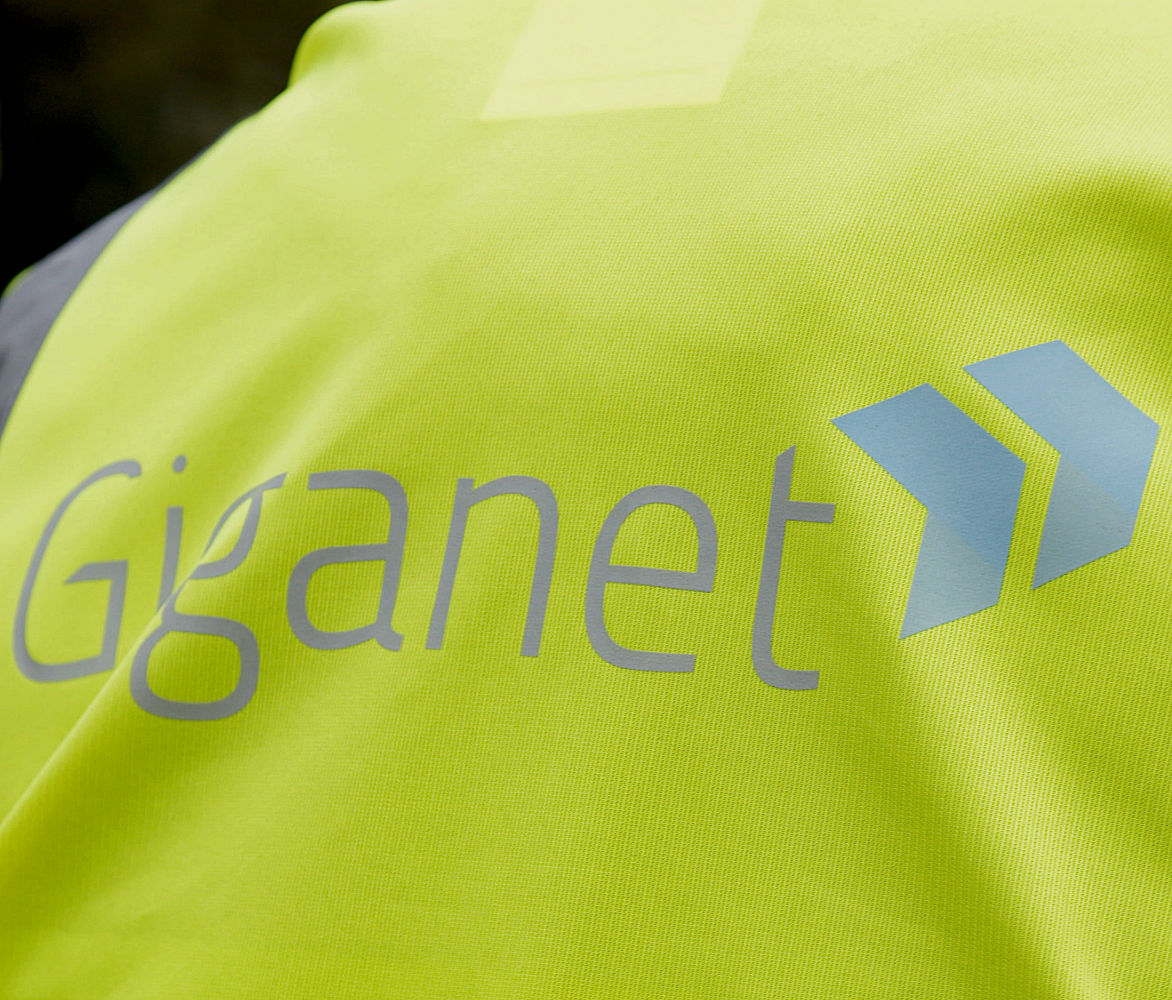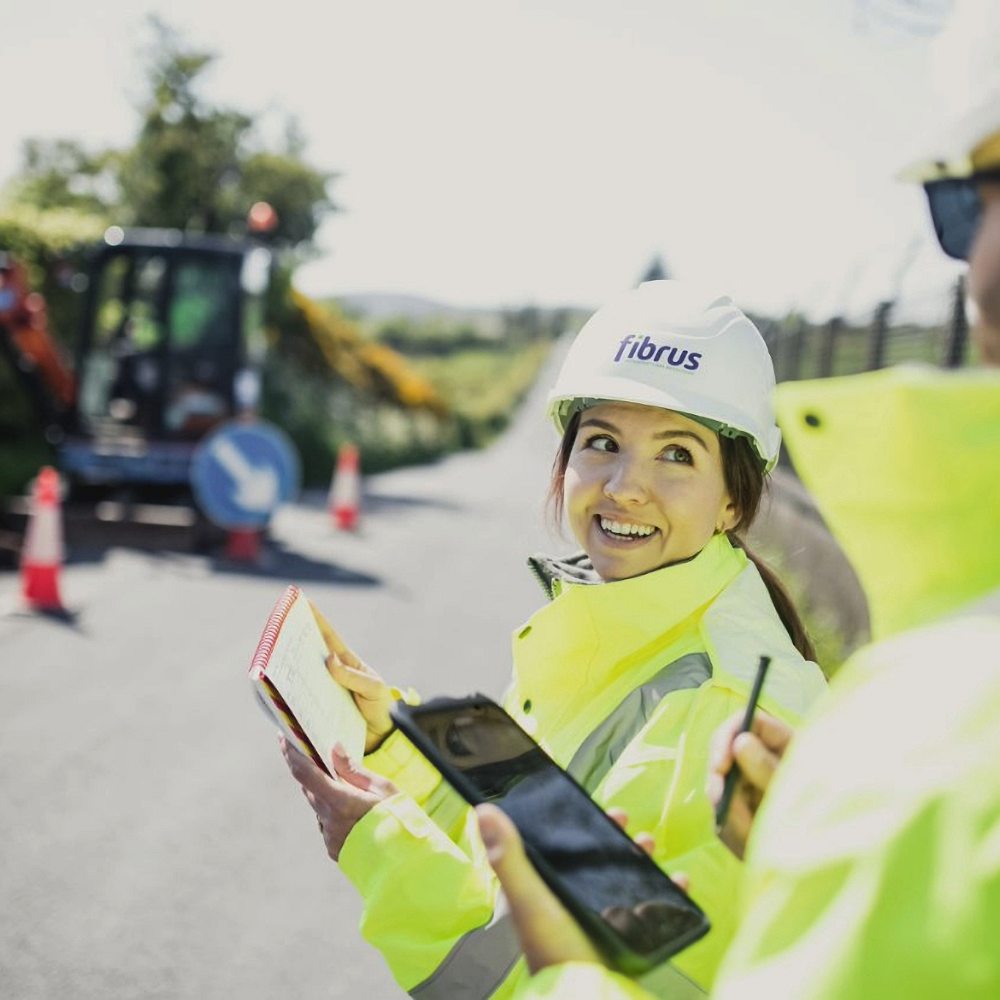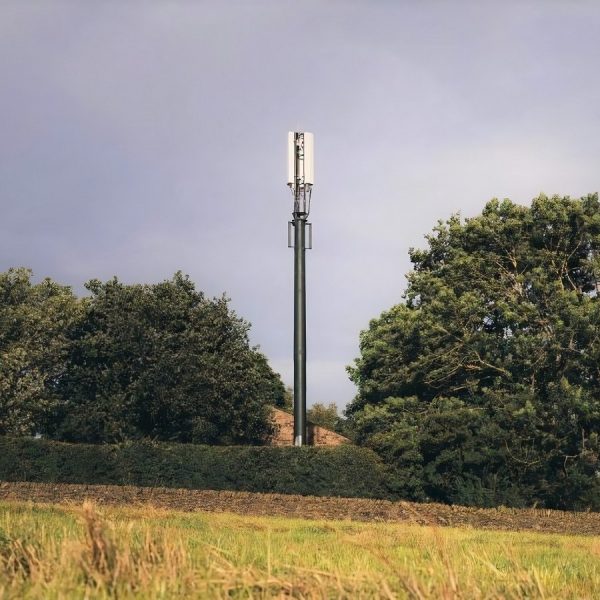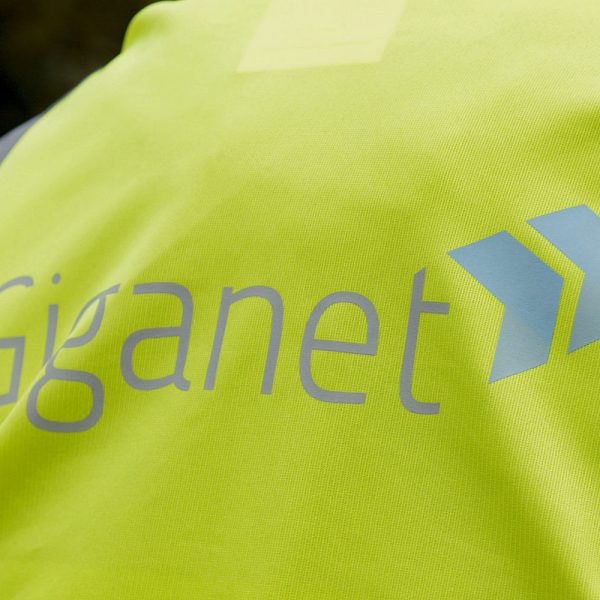How to Choose an External 4G or 5G Mobile Broadband Antenna

Likewise the operators won’t always deploy all of their available bands everywhere they go; sometimes it makes more sense to tailor choices to a specific area. The good news is that you can usually identify what bands are being used by downloading various apps (e.g. Network Cell Info Lite on Android devices) or finding the mobile network details page on your Smartphone or router.
Consumers who happen to be using one of Huawei’s mobile routers can also try checking out the LTEInspecteur software for Microsoft Windows, which gives you lots of access to advanced signal stats and even allows you to tweak which band you use (assuming the operator gives you a choice and it’s supported by your router/antenna).
Often such apps and pages won’t tell you the spectrum frequency and will just give a band number for your own operator (take a look here to see what spectrum the operators currently own). Operators will often own several bands, although they usually have one primary band for national connectivity (e.g. Vodafone and O2 use B20, while EE and Three UK prefer B3 on 4G).
Common 4G Mobile Bands in the UK
800MHz (Band 20)
900MHz (Band 8)
1800MHz (Band 3)
2100MHz (Band 1)
2300MHz (Band 40)
2600MHz (Band 7)
The next challenge stems from identifying your nearest mast(s) / cell site(s), or at least the most appropriate one for your location. This may be impacted by the local topography, surroundings and operator choice, so it’s not always the most logical or nearest one. The app mentioned above can help but you may also find useful data on these two websites – Mastdata.com and Cellmapper.net. The Opensignal app is also worth trying.
Take note that some network sharing agreements do exist between operators, which can complicate the picture. For example, Vodafone and O2 have a network sharing agreement under Cornerstone (formerly CTIL), while EE and Three UK have one via Mobile Broadband Network Limited (MBNL). As such one mast or cell site may potentially be serving more than a single operator.
Understanding signal strength
Next up it helps to understand “signal strength,” which tends to be reflected by several measurements (e.g. RSSI, RSRP, RSRQ, RSCP, SINR and EC/IO). You will need at least a basic understanding of these, or at least two or three of these, in order to better position your antenna.
Measures of Signal Strength
Received Signal Strength Indicator (RSSI)Reference Signals Received Power (RSRP)
Reference Signal Received Quality (RSRQ)
Received Signal Code Power (RSCP)
Signal-to-Interference-plus-Noise Ratio (SINR)
Understanding each one of the above is useful but it can get confusing and so we’ll focus on RSSI and RSRP/RSRQ because you’re most likely to come across those on 4G Mobile networks (as well as others like WiFi etc.). Generally all of these are indicated by a negative dBm (decibel milliWatts) value, which conversely means that negative values are actually good.. up to a point. The values here are negative because they actually represent small but positive numbers, albeit on a logarithmic scale (otherwise we’d be have to express, for example, a -100dBm signal in an uglier way like this: 0.0000000001 mW).
For example, an Excellent 4G RSSI signal would be -65 dBm, while a Poor signal would start at around -85 dBm. In simple terms, the closer to 0 dBm the better, although mobile networks are designed to have a wide coverage and so past a certain point there can be an issue of diminishing returns – in terms of data speed – on the way to a perfect signal. The measure for RSRP is similar to RSSI, except an Excellent 4G signal is had at -80 dBm.
Meanwhile RSRQ operates on a very different scale, which means that anything from around -10 dB (not dBm) is Excellent and – 20 dB would be considered Poor. However mobile modems are actually quite good at maintaining a reasonably fast data connection with even a poor signal, although slower speeds and worse stability will become more of a problem the weaker it gets (e.g. rural areas far from a mast).
For example, here’s a real-world reading we got from an indoor Three UK link on a Smartphone that was only about a quarter of a mile from an admittedly fairly congested urban cell site (using the ‘Network Cell Info Lite‘ app).

On the phone itself the result above (-95 dBm) gave us about 4 out of 5 bars of 4G signal, even though it’s not an ideal dBm score (those bars on your phone are NOT a good gauge of signal quality), yet mobile broadband speeds were 5-14Mbps.
However, when outside on the roof of our building this jumped to around 25Mbps with an RSRP score closer to -85 dBm, where it also became much more stable. Sadly the speeds didn’t improve much after that, even when walking closer to the cell site, which is probably down to limitations of the bands being used or the fact that the local data capacity may have been fairly congested with lots of users.
Common Questions and Tips
1. Why is my antenna better on a window than outside?
Sometimes you can do everything right and still end up with a bizarre situation, such as where your Smartphone gets a better signal / data speed indoors than a correctly positioned external antenna. Alternatively the antenna might get a better reception when sitting indoors on a window upstairs than fixed outside near the top of your house.
Unusual situations like this can be caused by all sorts of issues, which is why it pays to understand the signal readings and bands being used (as above) in any given location around your property. Mobile signals can suffer from all sorts of quirks, like reflections from other objects in the environment or changes in weather, and sometimes the router you’re using will switch bands automatically (depends on location, operator etc.) only to put you on one with slower speeds.
This is why we say that sometimes the most logical solution isn’t always the correct one. As such it often pays to spend some time testing different locations for both your router and antenna to see how the measurements change. In the course of doing this you might end up finding that an antenna was never required in the first place.
2. Borrow a friend’s SIM or handset.
Sometimes the best way to understand what kind of service may be optimal for your area is simply to borrow a friends phone, assuming they’re on a different network to yours, and run a few tests in different areas (take some signal measurements and do a few broadband speedtests). If possible you should try to do this for all of the major mobile networks and use a modern Smartphone.
We’d also recommend only using Pay Monthly SIMs as sometimes PAYG SIMs may have restrictions on data connectivity, which could give you a misleading result.
3. Ensure the router supports Carrier Aggregation (LTE-Advanced).
The term CA simply means the ability to combined several different radio spectrum bands at once in order to boost performance. The latest 5G networks and many urban 4G deployments should all support CA, although sadly these don’t always reach rural areas, but it’s still wise to only purchase kit that has support, just in case.
Devices that support the 3GPP Release 10 standard also support LTE-Advanced, although CA became much more refined from Release 12 onwards. Meanwhile the first 5G features tend to start at Release 14 onwards. You might also come across a reference to LTE Categories (e.g. Category 6), which helps to identify the peak theoretical downlink and uplink speeds of a 4G modem.
For example, 4G based Category 6 hardware can usually handle downloads of 300Mbps and uploads of 50-100Mbps, while Category 19 kit may be able to deliver 1Gbps+ speeds (i.e. on an ideal network with lots of CA and capacity to spare – in practice you’ll almost never achieve the peak). Modern mobile routers should all support a good selection of bands and speeds.
4. Beware different antenna connectors / sockets.
Not all mobile routers and antennas come equipped with the same external port type (some routers don’t even allow external antennas) and so it’s wise to ensure that you check what both bits of kit use before buying. The most common connector type is thankfully SMA, although you’ll probably also come across TS-9, CRC9, RP-SMA, TNC, BNC, N-Type, MMCX, FME and U.FL.
However don’t worry too much if you make a mistake and mix up different connectors because it’s often possible to buy adapter cables, which can convert between two different connector types. The picture alongside shows an SMA (Female) connector in gold and a TS-9 in silver, which are quite common.
5. Keep an eye on the CELL ID.
Some devices and apps won’t allow you to see what band is being used but they often do still report the CELL_ID number for the signal source (mast / tower etc.). If the CELL_ID number changes then the signal is coming from a different source and your device might at the same time end up using a different band, which can be another useful indicator when diagnosing performance issues.
6. Good Signal = Bad Speed, Bad Signal = Good Speed?
We’ve touched on this a little already in the article above but the point does need to be rammed home that a good signal doesn’t always equal good speed. Sometimes you can have an excellent signal but the band you’re connecting to may be congested, with lots of users, or it might simply not be able to carry much data (not enough spectrum frequency). Conversely this also means that you can sometimes get a better speed but with a worse signal quality. Like we said earlier, mobile signals can be quirky so.. test, test and test some more.
7. Rule out WiFi.
One important, if obvious, little point is not to confuse the potentially poor performance of the WiFi signal from your mobile broadband router with that of your mobile signal. Sometimes people get poor speeds as a result of WiFi and don’t realise that the mobile signal itself is fine. The best way to test your setup is thus to plug into a wired LAN port first and only use WiFi for connecting devices once everything else is working as intended, which will help to avoid any confusion about the cause of a performance issue.
8. What about indoor antennas?
In our own direct experience we’ve tended not to achieve much of a signal improvement from using indoor antennas. Some of the units on sale make big claims for fairly cheap hardware, although they’re no substitute for a well made and correctly installed outdoor antenna. However if you still want to give one a go then try the Poynting Omni indoor/outdoor SiSo antenna.
Hopefully this guide has helped you to understand some of the basics when it comes to choosing and setting up an antenna to help improve your 3G, 4G or 5G mobile signal. Since 2018 EE has also been offering an external antenna installation service (here) alongside one of their own mobile broadband products (4GEE Home Broadband), although you have to call them to get any details on this (number given is 0800 079 0131).
One other useful tip is to consider buying a mobile router from Huawei. The reason for this is that they tend to make fairly good kit and most of the mobile infrastructure being used today also comes from the same manufacturer, although this may change with the 5G rollout. You’ll also be able to use the aforementioned LTEInspecteur software, which is another bonus.
In terms of antenna choice, some of the best kit tends to be made by Poynting. At the entry-level there’s the Poynting 4G-XPOL-A0001 cross polarised omni or the 4G-XPOL-A0002 cross polarised directional, although if you want higher gain then be prepared to pay a fair bit of money for a good one like this – Poynting 6.2dB MIMO (sometimes you’ll end up fighting the laws of physics and a bigger investment might not be worth it).
Finally, the new generation of 5G mobile services are still being launched and Ofcom has yet to release all of their planned bands for this. As such recommending any antennas for 5G services tends to be a bit tricky right now, although some of the more expensive units do support the related bands (e.g. XPOL-2-V3-5G).
Mark is a professional technology writer, IT consultant and computer engineer from Dorset (England), he also founded ISPreview in 1999 and enjoys analysing the latest telecoms and broadband developments. Find me on X (Twitter), Mastodon, Facebook and Linkedin.
« COVID-19 – SamKnows Shows Broadband ISP Impact of Lockdown
COVID-19 – UK Mobile and Broadband ISPs Rally to Support NHS »
Latest UK ISP News
- FTTP (5516)
- BT (3514)
- Politics (2538)
- Openreach (2297)
- Business (2262)
- Building Digital UK (2245)
- FTTC (2044)
- Mobile Broadband (1973)
- Statistics (1788)
- 4G (1664)
- Virgin Media (1619)
- Ofcom Regulation (1461)
- Fibre Optic (1395)
- Wireless Internet (1389)
- FTTH (1381)






























































very interesting read and nicely timed.
Is the tp-link AC1200 MR400 any good as a mobile router?
I have the tp-link CD80 I bought it over a year ago in Malaysia I use it mainly when I travel. My reception an home is lousy with broadband especially at busy times.
I now just buy a unlimited sim for £20 for 30 days it works fine for my needs and I have never had any problem at all.
I was thinking of upgrading to a more up to date mifi and keep this one just for travel.
Huawei B525 is a much better unit for the same price. Tp-link is ok just not quite as fast as a B525.
Depends on your priorities. I don’t like Huawei firmware/web interface and find TP-Link significantly easier to configure. I’m generally happy with the related MR600 (Cat 6).
Wowza @Marks Jackson, a brilliant article, I’ve learnt an awful lot here, thank you
@Mark Jackson.. Fingers and thumb sorry
We get signal from one mast on a TV relay, no others in the area, problem is never been upgraded, still just 2G so of no benefit, planning for 3/4G masts to be built have all been thrown out after objectors put a stop to them, in the words of the objectors ” We don’t care if we don’t get a signal, at least we’ve safe from radiation” not particularly rural small town.
Great article, Mark. Thank you.
You can also get ‘phone repeaters’ or ‘boosters’
They became legal in 2018 under OFCOM
Although there are strict requirements.
Most available are illegal so beware.
At thus time only Cel-Fi units are legal license free versions.
We supply the commercial version for larger buildings and companies but hone versions do exist too.
With mobile an external antenna is very much swings and roundabouts, as you often lose as much signal in the cable run as you gain from having the antenna external and high up. Much better to get a combined external modem/antenna, this means all the gains are present with an external antenna without the loses of the cable run or the often “black art” of co-ax connections and impedance matching, as the modem is optimally connected to the antenna with no losses of cabling, you then typically get your Internet from the external device as Ethernet.
Thank you for this explanation, I always wondered why those aerial/lte modem combos were sold and what were the advantages, now I know 🙂
Good article Mark.
One thing that was overlooked is cable loss and therefore the advantage of installing an external antenna that is also the modem. This negates the issue of signal loss between the antenna and the modem. This is really only a concern when the signal is poor/very poor.
Mikrotik makes an LTE antenna + modem (all in one) that is very high gain and combines an LTE Cat6 modem. https://www.msdist.co.uk/mikrotik/wireless/lhg-lte6-kit
That is a very interesting product as it is PoE as well.
My only tiny concern would be lightening strikes hitting LAN devices. In my experience some kind of a WiFi/pure fibre gap is a good idea to mitigates the risk.
On one setup we did use a very short piece (1m) of fibre between two routers. Obviously powered from desperate circuits.
Yes, we use these Mikrotik antenna and they’re great. They have a number of solutions and dual sim devices. The POE via CAT5/ 6 Is ideal and allows for the longer reach cable runs in the trickier spots.
I’ve used a few ‘desperate circuits’ but only in emergencies 🙂
Ref the lightning strikes, We’ve lost a couple of routers and once the Physical BT socket so I’ve got mine sat in the loft. Sure its having to operate through sarking and slate but is still giving 24db and -75db RSRP.
Just ran the TBB speedtest @ 80Mbps down 18 up, that towers not in LoS its beyond the forested hill.
Please excuse the newb question, but with this sort of device would i need to connect it to a wifi router for my family devices to connect to, or does it act as a wifi access point as well? sorry if any of my terminology is jumbled up!
I’m just looking at this one, which seems to a good (albeit more expensive) all in device
https://www.outdoorrouter.com/product/outdoor-uk-wifi-4g-router-cat6-dual-sim/
Useful & interesting article, thanks!
Various examples and options available from mikrotik
https://mikrotik.com/products/group/lte-products.
The modems inside are modular in most of these so you can keep upgrading.
The dish versions are also good for the really fringe reception areas.
Various UK companies sell them and the prices aren’t unreasonable.
Installed quite a few mikrotik 4g routers.
Currently installing the high gain 21db
ones.
That the LHG one Nick i assume ? I’ve considered upgrading my SXT but not sure if it’s worth it as we’re not in direct LoS to the tower (its over the forested hill)
Currently getting 24dbm with -75 RSRP
Of course, here in IoW u just need to call wight wireless now known as Go Internet and a speedy reliable broadband is installed.
I have a holiday home in the South of France and also one in Southern Portugal. Both properties are in rural locations and suffer from very poor ADSL connections over the phone line, less than 4Mbps, which you also have to pay quite a high monthly fee for.
So a couple of years ago I started researching 4G routers combined with external antennas. I now have a reliable 25Mbps connection via a 4G mast that’s 5kms away over a hill covered in forest.
It’s turned into a bit of a hobby and I’ve been helping friends and neighbours with their internet connections. I’ve been providing them with a kit for less than 200 Euros that’s unlocked for any network, any SIM card.
The kit I’m using is the Huawei 4G Router B315 or B310 combined with the WMM8G-7-27-5SP Antenna made by Panorama Antennas UK. I’ve installed approximately 50 of these kits, time and time again they’ve worked great and people are amazed at the connection speed they get.
There’s many 4G antennas on the market that promise fantastic performance and their specs look great, I’ve tried quite a few but unfortunately most of them don’t perform as promised.
The antenna I’m using from Panorama Antennas works great and they also provide great customer support via telephone and email.
No, I don’t work for them, I just think they offer a great product and service and deserve a mention!
Fully agree – there are a lot of antennas on Ebay and Amazon that make nonsense claims in terms physically impossible gain figures, so stick to a reputable supplier like Poynting or Panorama – they are more expensive, but do what they claim!
Yes, I’ve called Panorama a number of times with technical queries and they’ve always been extremely helpful.
David
This sounds very interesting and wonder whether this is something g you could help me with…I live in a very rural area in the Blackdown Hills in Somerset and am looking for a reliable broadband system, possibly connected to a mobile signal/set-up.
If you are willing I could give you chapter and verse in another more detailed email.
Regards
Peter
Hi David, I live in a rural area and have a Huawei B525 router and looking to try and boost the 3/4g signal using an external antennae. What I am not clear on is how the external antennae connects to the router. There does not seem to be a socket on the router that would accept an external cable? I would appreciate any advice. Thanks very much.
Hi David, just checked my router and noticed a compartment and ubcliped it and there are 2 sockets for external cables, I assume the external antennae has 2 cables and they just screw in? Is that to simple, inwonder if you might share an idiots DIY guide to installing the antennae. Thanks very much indeed, yours in hope.
Scientific American on the dangers of microwave and millimeter wave.
https://blogs.scientificamerican.com/observations/we-have-no-reason-to-believe-5g-is-safe/
Sorry but that’s irrelevant, this article is about choosing an external antenna.
By the way, don’t let your kids stand too close to your microwave, some of them leak!
I mean some microwaves leak, not your kids.
Scientific American on how those dangers are overblown.
https://blogs.scientificamerican.com/observations/dont-fall-prey-to-scaremongering-about-5g/
Opinion pieces published by them are opinions of the writer not the publication. That you don’t understand this basic premise speaks volumes.
Couple of factual points in an otherwise good article.
LTE requires a MiMo antenna by definition in the LTE standard, while using a single external antenna would work in some circumstances it would not provide any benefit. Always use a dual feed MiMo antenna.
The best performing Antennas are Cross Polarised as this will March the base station antenna design – ie +45deg / -45deg rather than Vertical & Horizontal.
RSSI isn’t relevant to LTE performance at all, only examine RSRP for a relative LTE signal “strength”, but it is relative to the band in use.
For performance at any RSRP level the best performance will be governed by the SINR, critically the greater the number above 0dB (upto +20dB) the better the download and upload speed will perform.
Check out https://wiki.teltonika-networks.com/view/Mobile_Signal_Strength_Recommendations for an excellent in-depth but very readable summary of what all the numbers mean (particularly debunking RSSI as actually meaning anything useful at all if you have the more detailed numbers).
RSSI is a very crude measure of ‘signal strength’, as it lumps together signal, noise, interferers and reflections. Only signal is usable, hence sometimes poor performance with high RSSI level. Signal paths are not always reciprocal, due to receive and transmit being on different bands, so you may see high RSSI, but the Base site cannot see your transmissions nearly as well.
Signal quality measures are better, but still don’t tell you how well the Base site is seeing your signals. In professional coverage assessment, we use real voice segments and make actual calls, scoring the received voice quality with a computer algorithm…
Great article, I researched externals before deciding on an integrated solution SXT LTE, Didn’t fancy spending the money on an external antenna for a 4g home router only to lose signal down the cabling from the antenna.
Other option of course was to put the device in the Loft but then it would have needed mains power and be a pita to get to.
Mines Poe and giving me better than 40x my old adsl connection. Sure its more variable depending on the cell tower congestion but haven’t regretted the switch to 4G. I’m classed as remote/rural/hard to reach so its really been a massive upgrade.
it would also be interesting to see an article on the relative merits of different modems (apologies if I’ve missed a previous article)
Should I get the ee sim + modem or buy my own modem and get a separate sim card?
In my case, I am 2km with LOS to a mast which will hopefully be live within the next few months
I’ve had excellent results with the Huawei B310 and B315, they’re pretty cheap too. If you want a bargain there’s many used, unlocked units for sale on Ebay.
They seem to be very reliable, I’ve installed around 50 and haven’t had any faults at all.
The internal antenna seems to work very well but of course there’s also the option of conection an external antenna. From what I’ve experienced theyre good at working with a weak 4G signal.
I had a Huawei B618s modem in a ground floor window on the side of the house nearest our local EE 4G mast. Did a good job with its internal antenna but decided to try an external antenna anyway. Popped a Poynting A0002 directional antenna on our sky dish pole (which means it’s about 3m off the ground) and aligned using mast data and Google maps! Makes a significant difference to signal: RSRP is improved by about 6dBm, RSRQ stays more consitently in low single-digits, and SINR sits solidly at +/- 20dB (whereas before it would often dip down to 10dB). In terms of performance, download still seems to be limited more by congestion than anything else (can be well over 100Mbps at quiet times, but dips at peak times) although upload is noticeably better at 27-33 all the time versus low 20s. Biggest surprise was what happens on the occasions our nearest mast is down for maintenance and the modem switches to the next best mast which is in a different direction (NE rather than NNW). I’d expected to have to switch to internal antenna, but in fact in spite of being a directional antenna the Poynting gives the same stats and performance as the internal antenna used to! Just goes to show it’s art as well as science…
It’s worth looking at the gain profile diagrams that the more reputable producers include with their antennas. Although the Poynting A-002 is described as a directional unit, it has decent gain over quite an angle. I moved ours from indoor roof space (perfectly aligned on a pole) to outdoors flat against the side of building using the supplied wall mount (a few degrees off in alignment and about a metre lower), but the signal improved noticeably in both strength and quality.
Get a MIMO antenna.
Does anyone know how you can find out which direction the closest mast is?
ISP coverage maps can give a good indication in rural areas. For urban, mast loading and local topography is probably at least as important as absolute distance.
I stay in a rural location. I know where the few O2 masts in the area are (the O2 website is also useful for checking this) and my signal has to be coming from 1 of 2. They are both in completely the opposite direction. My router sits in the middle of the windowsill, I have tried moving it to both sides to see if that rules 1 of them out. Unfortunately it does not. Are there any IOS apps that can tell you where your signal is coming from?
I find this site the most useful. https://www.cellmapper.net/
My personal experience in my camper that an external aerial (on telescopic pole) was of benefit in very remote areas of the UK, in semi rural I could get a reasonable result with paddle aerials. At home in urban I have just ended up with a B315 (paddle aerials) in the loft Cat6 cabled down home router. Beware not all router firmware can be set to bridge mode so if that’s important spend carefully.
Yes, I’ve also used the Cellmapper website to locate masts, in the UK, France and Portugal.
The Huawei B310 and B315 Routers are 12v devices, I purchased a cigarette lighter plug incorporating a 12v regulator circuit, so I can also use the router in my car and motorhome.
I like the idea of mounting the 4G router in the loft and running Ethernet down into the house. For some people I guess it’s worth trying and might save them the expense and hassle of mounting an external antenna.
use the opensignal app
I wondered if anyone could advise me on how to improve our mifi signal on our narrowboat? We currently use a Huawei E5573Bs-322 USB dongle which is powered on a 12v system. Any solution would also need to be powered from 12v as, although we can have 240v, we don’t want to run our inverter 24/7.
The internet is painfully slow at times and as we use it for business it’s becoming a frustration.
Any help gratefully received, thanks.
Hi Vickie Hunter.
I’ve supplied a number of 12v systems with an external antenna for people living on narrowboats, with great results.
The kit I would recommend is as follows:
Huawei B310 or B315 4G Router – Unlocked
12v to 12v Regulated Power Adapter
Panorama WMM8G-7-27-5SP Outdoor Antenna (same as the one in the photo at the very top of this article).
I have a kit like this available if you’re interested.
well the batteries are 12v, the routers are 12v. You don’t exactly need a kit! And what you do need can be picked up for pennies on ebay
The Huawei B310 and B315 are actually 12v DC units, they are supplied with a 240v AC power supply for use in homes.
When a vehicle, motorhome, caravan, boat battery is being charged by an alternator, mains hook up, or solar power system, the 12v system can rise far higher than 12v, hence the reason why a regulated 12v power supply is required to avoid damage to the router.
Has anyone compared the modem performance of the Mikrotik SXT LTE6 kit with any of the Huawei routers? I’m using the Huawei B618 at the moment which I find is marginally better than the B535 and quite a bit better than the older 525 but adding external aerials to the Huaweis makes no difference and I wondered if the Mikrotik would be likey to capture a better signal.
This is the question I’ve been trying to answer for a couple days now.
The main decision seems to be between
A) a combined Router/Antenna combo wired in with POE
or
B) a seperate router and ariel combo
I’m about to order the kit for B only because this seems to be the more common solution. If I have problems I’ll be going with A and report back.
Hi,
I am setting up a Vodaphone GigaCube at my home and wanted a solid antenna for outside the house.
I am looking at two versions:
Huawei 5G AF9E outdoor boosting 5G antenna, peak gain 14dBi, frequency range 3300-4200MHz, easy installation – White
Or
https://www.4gltemall.com/vodafone-gigacube-5g-external-antenna.html
Could you shed some light on whether I will get any improvement with these antenna. Cabling should be approx 5m from antenna to gicacube.
Huge thanks for your input.
Hi Jamie One, are you actually going to be using it for 5G or only 4G? Consider what frequencies you need the antenna to cover.
From my experience, If you’re willing to spend a little time aligning the antenna then the directional antenna will give better results than the omni-directional.
I’ve never used either of those antennas, but I can strongly recommend an antenna from Panorama Antennas. http://www.panorama-antennas.com
Are you sure the Huawei AF9E actually exists, I mean do Huawei actually make it? I can’t find it anywhere on Huawei’s websites.
I’m afraid 14dBi Gain doesn’t sound believeable.
Hi thank you,
Only going to use 5G for now.
Link to Huawei antenna:
https://www.amazon.co.uk/AF9E-boosting-frequency-3300-4200MHz-installation/dp/B083L1GY26/ref=mp_s_a_1_3?dchild=1&keywords=5g+antenna&qid=1588070415&sr=8-3
Yes, I’ve seen it on Amazon, eBay, etc. But I can’t find it on Huawei’s website, that’s why I’m wondering if it’s genuine? I might be wrong.
You have to be careful as there’s many cheap or even expensive antennas coming from China that promise huge gain but actually don’t work very well.
When I click on the Amazon you gave it shows the antenna for sale. There’s 31 User Reviews but they all relate a Huawei Router NOT an Antenna.
Smells a bit fishy.
Hi David,
You are right, I won’t be buying the Huewei.
Thank you for your link I will look into these a little more.
I don’t know if Panorama Antennas office is open due to the current situation, but I’ve called them a few times for technical advice and they’ve always been very helpful and I’ve had excellent results with their kit.
I’ve also heard good reports about Poynting antennas, see their website here…
https://poynting.tech/product-category/application-products/household/
Good luck!
What a fantastic article.
Very helpful Thx
Great article,
I’ve been looking into this and trying a few different things, but wondered if anyone had any advice on my situation?
I have a static caravan on one of Haven’s site in North Wales. The signal for Three is good and works ok some of the time. However, when there are a lot of visitors on site, all trying to use their phones, the speed deteriorates quickly and it becomes unreliable.
Is there anything that can be done to help with this?
Thanks
Hi, asking for a bit of advice. We’re in a semi rural area, in a bit of a valley and surrounded by trees, which doesn’t make for good broadband (that and 3 foot thick stone walls!) We’ve got Mifi and on a good day we can get about 35mps using a Huawai router, but the signal strength is up and down like a kangaroo on a pogo! Would an external antenna help stabilise the signal? I appreciate that I may lose a bit of speed via the cable but would just be happy with a constant speed, anything over 10mps would be nice! Thanks.
Hi
I live in rural west Wales Dolgellau at 900ft above sea level. All around my home I have excellent EE 4g but not inside (probably due to the heat reflective lining and glass) but the fixed broadband is terrible at 0.2mps. I bought a 4gee home router pre-owned on eBay (limited income) as the signal is good outside I figured I don’t need an amazing and expensive antenna what do you suggest?
Thanks for this helpful article
David
I would recommend this antenna, I’ve had great results with it.
I’m not sure what router you have so you need to check if the connections are compatible.
Panorama WMM8G-7-27-5SP Outdoor Antenna (same as the one in the photo at the very top of this article).
Regards, David.
My need is occasional but reliable mobile broadband for running Zoom meetings when away in my motorhome. When not zooming, I am happy with regular phone connections.
Would it make sense to buy a battery powered unit and attach it to a pole which I can raise when I need to make the Zoom meetings?
What might be the reasons not to do this? It seems a simple cheap solution.
I had In mind the Huawei E5787. Why might I buy a more expensive unit?
Any suggestions and comments welcome.
Anyone have experience with the OutdoorRouter routers and antennas?
Is it better with CAT6 than CAT4 when the LTE-connection is poor? Or is there no difference? CAT6 has higher MHz range.
Thanks for answer!
HI..need advise…4G router and external omi antenna. for a caravan site with poor to good reception in doors of caravan, but out doors or from roof the reception is great. USed for moring tv shows for kids and at night for family movies tv shows, will be streaming from Netflix, Disney+, Prime, Sky Go, NowTV and youtube.. then normal social media and internet use.
Want to keep price down, so not higher than £100. Please recommend.
Huawei, DLink etc
Most caravans are constructed with an aluminium skin, this kills the signal. You need to get a router that you can connect an external/outdoor antenna to.
I would recommend a Huawei B310 or B315, they are resonably priced.
Then attach an antenna made by Panorama Antennas and mount it outside.
All the best, David.
Excellent article! But I was wondering if there are any companies that offer professional installation? That can measure actual signal/speed from different base stations available, recommend best mobile operator for the area and install most suitable equipment.